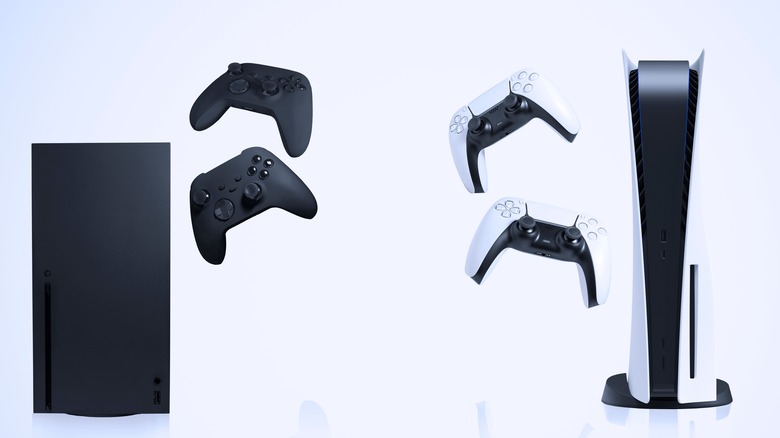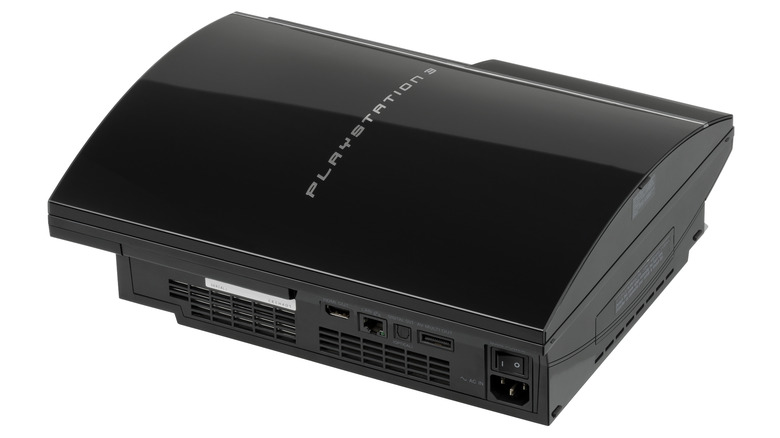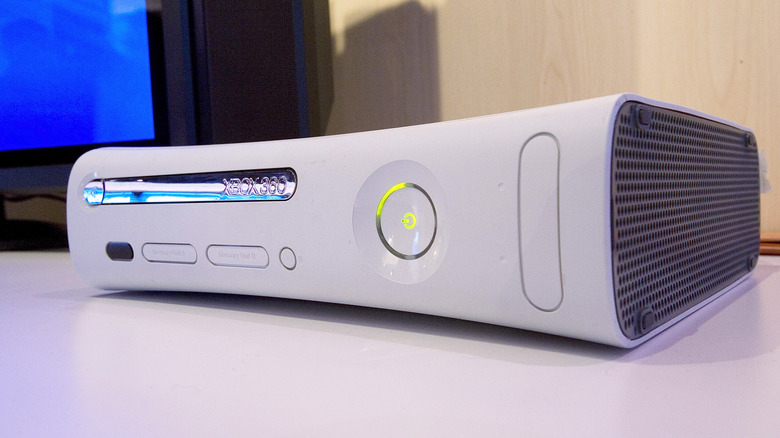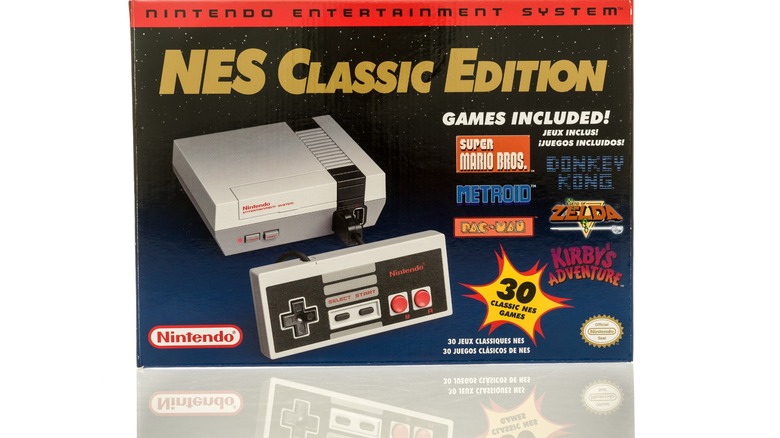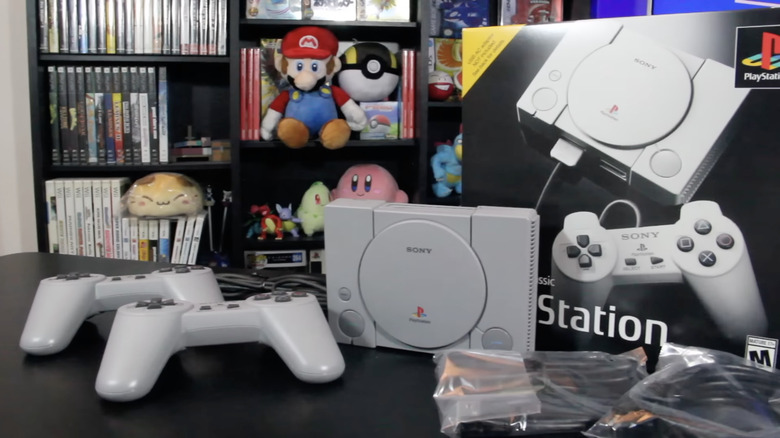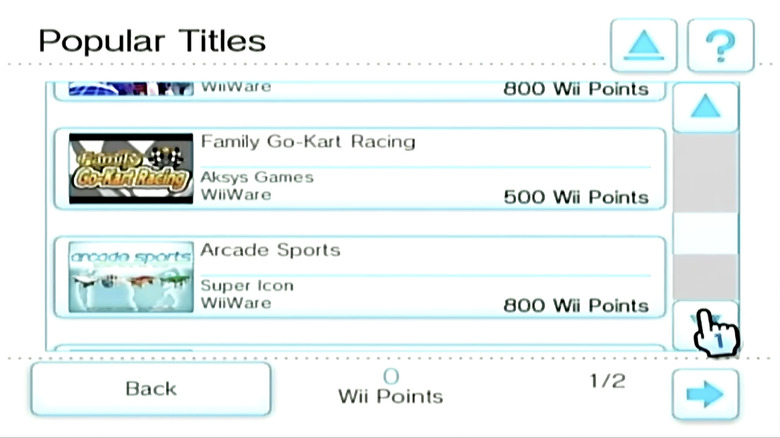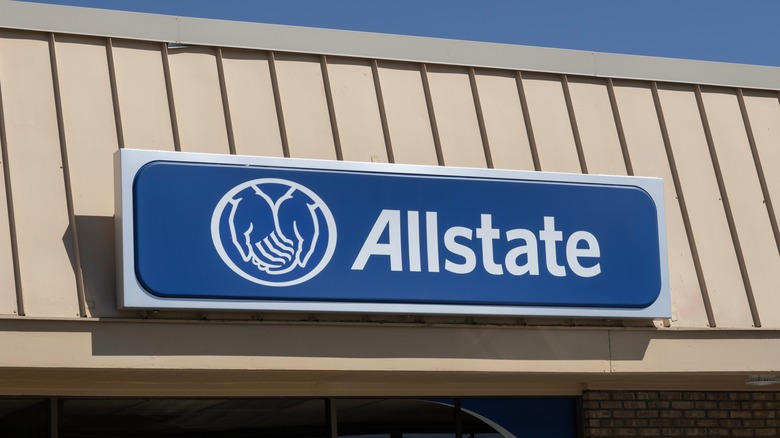6 Things You Should Know Before Buying A Used Gaming Console
If you're sticking to a tight gaming budget, one of the best options is to stay a console generation behind and feast on an array of used systems and games for heavily discounted prices. The used game market blew up in the '90s, thanks in large part to the rise of the FuncoLand chain of stores (which later merged with GameStop), and since then, the gaming world has never been the same. Suddenly, cash-strapped kids and parents had a theoretically reliable way to score consoles and games at reduced prices. Video rental stores like Blockbuster Video would offload inventory as used product, too, so while there was some degree of controversy over used copyrighted works being resold in that era, it was quickly normalized and has long since ceased being controversial.
When it comes to buying used consoles, there's a lot more that you need to know about them than just their condition. Accurate grading and being able to inspect the consoles if the transaction is taking place in person is important, but it doesn't address every possible issue. Some consoles had distressingly common fatal defects, and they weren't necessarily noticeable at first glance, while others had a confusing array of hardware variations. It's also wise to be informed about recent retro-themed "mini-consoles," as well, as they're prone to being bootlegged and some had peculiar issues. Speaking as someone with 30 years of experience shopping for used consoles, let's look at some things you need to know when buying them.
The PlayStation 3 has some confusing hardware variations
In time, the Sony PlayStation 3 was an unqualified success, outselling the rival Microsoft Xbox 360 in the battle of the first HD-capable consoles. However, the PS3 had a very weird start, thanks in part to, among other things, the variety of different models of the console and how exactly they differed. By 2008, the basic feature set that would remain for the duration of the PlayStation 3's run was firmly in place, but before? There were a bunch of different variations that were quite distinct from the forms the console took for most of its life.
The biggest distinguishing feature of early models, driving the price up from later versions, was the ability to play PlayStation 2 discs via backward compatibility by stuffing actual PS2 hardware into the PS3. Less memorably, the early $500 and $600 models also distinguished themselves with playback of Sony's largely forgotten Super Audio CD format, plus the inclusion of a flash card reader (supporting SD, Memory Stick, and CompactFlash) and two additional USB ports. If those prices don't sound ridiculous compared to today's 4K consoles, keep in mind that adjusting them for inflation price them out at approximately $700 to $900 in 2024 funds. Regardless, if you're a PlayStation fan looking to save physical space by not needing a PS2, the early PS3s offer that option.
Xbox 360 consoles had a disastrous flaw
Even if you have never owned an Xbox 360, if you were around gaming during its lifespan, you've probably heard the four words that haunted its owners: "Red Ring of Death," referring to an error code displayed by the console as a ring of red LEDs. Technically speaking, it's the console's general error code for any internal hardware issue, but in practice, it happened to such a disproportionate number of consoles that it became a nightmare for both the user base and Microsoft. It was long theorized that a poor thermal design was the primary culprit for the widespread issues, and while there's truth to that, it's not the suspected overheating. According to a documentary released on the official Xbox YouTube channel in December 2021, it was a rapid fluctuation in temperature causing the widespread failures.
"The breakthrough came when we understood that the connections that were being broken were not located on the motherboard, but they were actually located inside the components," recalled Xbox hardware engineer Leo Del Castillo in the documentary." The reason it was breaking was thermal, but it wasn't because of peak temperature. It was because when the unit would get hot and then cold, hot and then cold, every time it did that it would stress the connection." If you want a 360, then the move is to get the newer Xbox 360 S or E models, not the older Elite, Pro, or Arcade versions that were plagued by defects.
Retro mini consoles are sometimes bootlegged
In 2017 and 2018, Nintendo released limited runs of miniature replicas of its first two consoles in the form of the NES Classic Edition and SNES Classic Edition, which ran a selection of classic games in a custom emulation environment. If you go shopping for them now on the secondhand market, the NES Classic and SNES Classic often go for more than their original retail prices, especially if you want the original box. Thanks to factors like this and how hard the mini consoles were to find at their time of release, various knockoffs flooded the market, some of which are more convincing than others.
If you've done any advance research about the mini consoles, then some aspects of the bootlegs can make them easy to spot. If they're sold with the original box, the box is sometimes completely different from the genuine article. Fakes often tout having a much higher number of games than the few dozen on the legitimate NES Classic or SNES Classic as well. Despite using an obvious replica of the NES Classic casing and filling it with copyrighted games, they may also avoid using Nintendo's trademarked logos on the box and hardware. Also, if the mini console has a connection other than HDMI output, like composite video, then it's a bootleg. The same goes for if it's supposed to be a complete original, but the HDMI cable lacks Nintendo branding.
The PlayStation Classic was a bit of a disaster
As retro mini consoles boomed, Nintendo's versions, the NES Classic Edition and SNES Classic Edition, were incredibly well-received for their premium presentation and faithful emulation. Unfortunately, that didn't apply to all of the competition. Most infamously, there was Sony's incredibly problematic handling of the PlayStation Classic, the mini console that ran various emulated PlayStation 1 games. For reasons that have never adequately been explained, the American PlayStation Classic included the European versions of various games, which means that they run noticeably slower than the American or Japanese originals.
The reason for this goes back to how, at the time, North America and Japan used a different TV color system and refresh rate, NTSC, from the one dominant in Europe and Australasia, known as PAL. Though PAL tended to have a superior resolution to NTSC, it had to run at 50 Hz to match the PAL countries' electrical systems, as opposed to the NTSC countries' 60 Hz electrical outlets. Much of the time, developers simply reduced the speed of the game by 17 percent to get it to match PAL's refresh rate instead of re-coding it to match the different power cycles, and in many of the affected games, this greatly hurts the gameplay. With nine of the 20 games preloaded on the mini console being poor PAL conversions and those including fast-paced fighting, platform, shooting, and racing games, the gameplay experience is wildly suboptimal. It was a waste of a good idea.
A lot of early download-only games are gone forever
Though there had been previous attempts at online console gaming, the 2001 launch of the original Xbox is what really ushered in the online console ecosystem as we know it now. This included not just online multiplayer games, but also each console maker's own downloadable game store. One of the biggest changes that came as a result of this was that suddenly, smaller developers had much easier access to publishing games on consoles, as the sales needed to justify a physical retail copy of a game were not necessary. Indie gaming boomed as a result, dramatically altering the landscape of console gaming. A lot of cool games that normally would have been stuck as PC-only suddenly had a completely new audience.
Unfortunately, though, digital rot is a thing, and the console makers have shut down their game stores on their older consoles, with the Xbox 360 store closing most recently, in July 2024. So if you're buying a Nintendo console from before the Switch, a Sony console from before the PlayStation 4, or a Microsoft console from before the Xbox One, all of which are only available used, there's a decent chunk of the library that's no longer available by legal means. It's an unfortunate reality of digital distribution, and we just have to live with it. So if you're buying a slightly older console, make sure all of the games you want have retail disc versions available for reasonable prices.
Extended warranties and protection plans are an option
Outside of limited circumstances like eBay Refurbished where it's bundled in, most used video game consoles are not going to come with a warranty of any kind. Being that a used console could be affected by anything from normal wear and tear to a serious widespread defect like the Xbox 360's infamous "Red Ring of Death," and since even consoles from the HD era could be as much as 19 years old as of 2024, it's arguably best to have some peace of mind and buy an extended warranty with your used consoles. Online, these will often be offered alongside your purchase from a company like Asurion or Allstate Protection Plans (formerly SquareTrade), but some, like Allstate, also have the option to buy an extended warranty on its own, even for used electronics.
As noted above, the most convenient way to do this may be to get your used console from a seller who's part of the eBay Refurbished program. In establishing that program, eBay banned all sellers outside the program from selling electronics as "refurbished," so if you see an eBay seller advertising electronics as "refurbished," you'll most likely see the official eBay Refurbished certification badge on the same listing. (If you don't, you should report the listing to eBay.) All eBay Refurbished products come with at least a one-year Allstate warranty, which extends to two years if the item was refurbished by the manufacturer or an authorized reseller.
